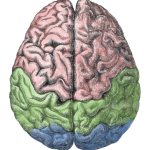Mar 15, 2018 Know the Why Behind What You Do
Excerpt from Tips & Tools for the Art of Experiential Group Facilitation Second Edition.
 Take time to study the theory and science behind what you do. Regularly reflect upon and intentionally observe what works in your groups, and consciously develop your philosophy of facilitation and teaching. Reading about theories of experiential education, facilitation, and teaching along with new research on the brain and learning helps refine your practice and develop clear purpose.
Take time to study the theory and science behind what you do. Regularly reflect upon and intentionally observe what works in your groups, and consciously develop your philosophy of facilitation and teaching. Reading about theories of experiential education, facilitation, and teaching along with new research on the brain and learning helps refine your practice and develop clear purpose.
Engaging in the study of theoretical foundations of experiential education from Greek philosophers to John Dewey during my time in graduate school added a lot of depth to my work. My introduction to Taoist philosophy with Steven Simpson and his book, The Leader Who is Hardly Known (2003), gave me new perspectives on the role of the facilitator and educator. Delving into research on the brain and learning has forever changed my approaches to designing lessons and sequencing experiences.
Regular reflection on the philosophy of experiential education combined with research into actual day-to-day practice became a habit after being inspired by participation in an action research course in graduate school.
Action research is a practitioner-as-researcher approach where professionals actively take part in structured inquiry and reflection into their own work to identify how to better impact their clients. An action research perspective continues to give me clarification about the choices I make and why I gravitate toward particular activities and methods.
Donald Schön (1983) in his book, The Reflective Practitioner, refers to this as one’s “theory in use” or the theories that drive our actions. This theory in use is the set of concepts by which one works—it helps define goals and objectives, influences how to design experiences. Regularly reflecting upon and expanding my “theory in use” has helped me understand and explain the why behind what I do, and pushes me to be more intentional in my practice of facilitation.
Keep up with new trends in education, psychology, brain research, and other related fields. This information can inform and improve your practice, imparting insights into why certain practices work well and why some old methods should be replaced. It also provides rationale and validation for experiential education that can generate buy-in from managers, school administrators, and other stakeholders who want to know the value of this approach. Being able to articulate why and how experiential learning works makes a more effective and credible practitioner.

Research from the field of educational neuroscience is especially compelling. The brain-based approach to teaching and facilitation supports experiential philosophy and style and helps validate and explain the approach to stakeholders. Delving into this research has given me new ideas on how to better meet the needs of participants. It has increased my awareness of the effect of environment on learning; the importance of taking time up front to promote buy-in, ownership, and emotional safety; and the value of intentionally using a variety of methods to engage groups in learning. Brain research supports the tenets of experiential education, confirming the importance of emotional engagement and use of symbols and metaphor to enhance learning outcomes.
Susan Cain’s work on temperament and the power of introversion validates the importance of giving choice and control in group situations and recognizing that social, outgoing character traits are not the only ones we want to value and cultivate in group work and leadership training. Her book, Quiet: The Power of Introverts in a World That Can’t Stop Talking (2013), and website, quietrev.com, challenge societal assumptions about leadership and success in interpersonal situations. She suggests being aware of and considering different social styles when planning a program and including opportunities for deeper thought and solo reflection as well as interactive group work. You don’t have to be an outgoing, charismatic “edutainer” to be an effective facilitator or leader. This information, as well as the movement to differentiate instruction, reminds me to balance kinesthetic activities with quiet reflection and small group dialogue with whole group activities.
It is an exciting time to be an educator, information on advances in neuroscience, new research in pedagogy, reflection, motivation and human performance are readily available to the thoughtful practitioner. Paying attention to new research keeps us fresh and inspired. Being able to articulate the why behind what you do creates intention and a thoughtful, deliberate, and goal-directed approach to your work.
References:
Cain, S. (2013). The power of introverts in a world that can’t stop talking. New York: Broadway Books.
Schon, D. A. (1983). The reflective practitioner: How professionals think in action. New York: Basic Books, Inc.
Simpson, S. (2003). The leader who is hardly known: Self-less teaching from the Chinese tradition. Bethany, OK: Wood N Barnes Publishing.
Stanchfield, J. (2016) Tips & Tools for the Art of Experiential Group Facilitation. Wood N Barnes Publishing.



No Comments